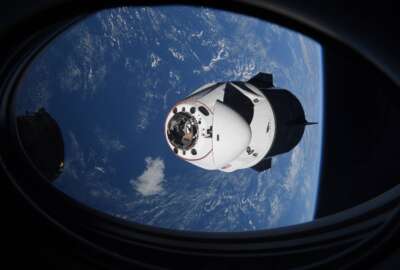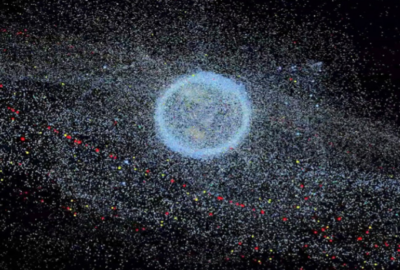Moon mining and satellite collisions make list of DoD concerns in space
A new report from the Defense Intelligence Agency outlines some of the biggest space threats from the last two years.
Outer space is becoming increasingly militarized as China, Russia, the United States and other countries continue to vie for dominance in the domain and even consider mining off-planet assets.
The Defense Department identified it’s two biggest competitors, along with increasing congestion in the area just outside the Earth’s atmosphere as some of the largest threats to the United States’ space interests.
“China and Russia value superiority in space, and as a result, they’ll seek ways to strengthen their space and counterspace programs and determine better ways to integrate them within their respective militaries,” Kevin Ryder, Defense Intelligence Agency senior analyst for space and counterspace, said Tuesday at the Pentagon. “Both nations seek to broaden their space exploration initiatives together and individually with plans to explore the moon and Mars during the next 30 years. If successful, these efforts will likely lead to attempts by Beijing and Moscow to exploit the moon’s natural resources.”
In a new report from the DIA, the organization found that since 2019 competitor space operations have increased in pace and scope across nearly all major categories including communications, remote sensing, navigation, and science and technology demonstration.
Ryder said that China and Russia intend to undercut the United States and its allies in space.
The report states the two nations increased their number of satellites around the Earth by 70% in the last two years.
Other advancements include China landing a rover on Mars and a robotic spacecraft on the dark side of the moon.
“What we’ve seen so far has been more civilian in nature,” Ryder said. “However, China emphasizes in their writings, civil-military integration and dual-use purpose space capabilities. While we do understand that right now, it is civil in nature, we continue to monitor for any possibility of military activity.”
It’s not just competition that DIA is outlining as a threat to U.S. space efforts. The intelligence agency noted that the probability of collisions of massive derelict objects in low earth orbit is growing, and will continue through at least 2030.
“As of January 2022, more than 25,000 objects of at least 10 centimeters in size were tracked and cataloged in Earth’s orbit to include active satellites,” the report states. “The primary risk to spacecraft in orbit is from uncataloged lethal nontrackable debris (LNT), which are objects between 5 millimeters and 10 centimeters in size. An estimated 600,000 to 900,000 pieces of uncataloged LNT are in low earth orbit.”
Looking to the future, the U.S. is now considering deep space operations and the challenges they will present for tracking and monitoring spacecraft.
DoD has outlined space as a crucial domain for the United States. The Pentagon is increasing its investments in space capabilities. The 2023, budget request asks for $27.6 billion for space capabilities, command and control and resilient architectures.
That’s not to mention that Congress and the department set up the Space Force in the last couple years, a military branch solely focused on operations outside of earth.
The Biden administration is asking for the largest ever Space Force budget next year at $24.5 billion.
Copyright © 2024 Federal News Network. All rights reserved. This website is not intended for users located within the European Economic Area.
Scott Maucione is a defense reporter for Federal News Network and reports on human capital, workforce and the Defense Department at-large.
Follow @smaucioneWFED






